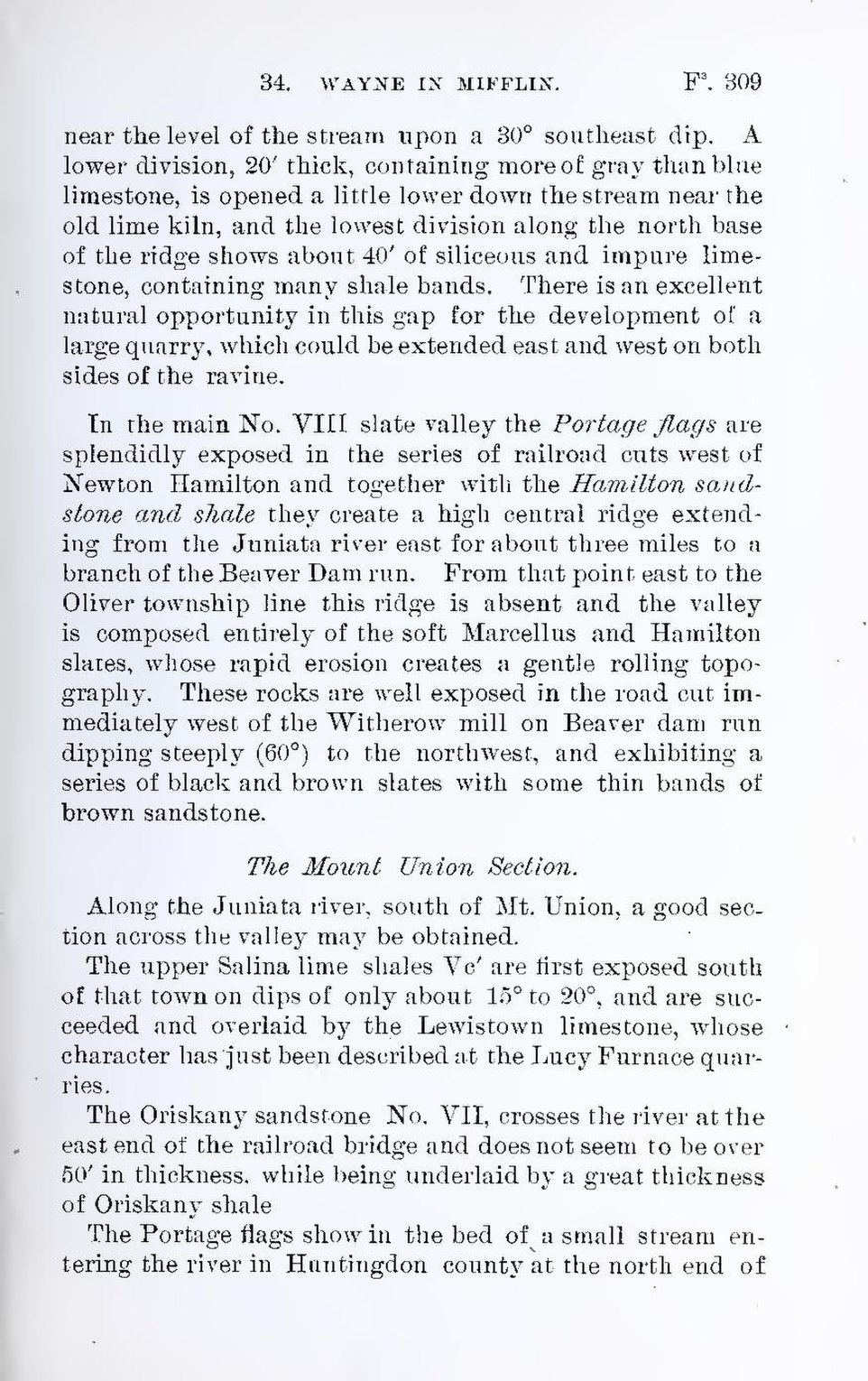near the level of the stream upon a 30° southeast dip. A lower division, 20′ thick, containing more of gray than blue limestone, is opened a little lower down the stream near the old lime kiln, and the lowest division along the north base of the ridge shows about 40′ of siliceous and impure limestone, containing many shale bands. There is an excellent natural opportunity in this gap for the development of a large quarry, which could be extended east and west on both sides of the ravine.
In the main No. VIII slate valley the Portage flags are splendidly exposed in the series of railroad cuts west of Newton Hamilton and together with the Hamilton sandstone and shale they create a high central ridge extending from the Juniata river east for about three miles to a branch of the Beaver Dam run. From that point east to the Oliver township line this ridge is absent and the valley is composed entirely of the soft Marcellus and Hamilton slates, whose rapid erosion creates a gentle rolling topography. These rocks are well exposed in the road cut immediately west of the Witherow mill on Beaver dam run dipping steeply (60°) to the northwest, and exhibiting a series of black and brown slates with some thin bands of brown sandstone.
The Mount Union Section.
Along the Juniata river, south of Mt. Union, a good section across the valley may be obtained.
The upper Salina lime shales Vc′ are first exposed south of that town on dips of only about 15° to 20°, and are succeeded and overlaid by the Lewistown limestone, whose character has just been described at the Lucy Furnace quarries.
The Oriskany sandstone No. VII, crosses the river at the east end of the railroad bridge and does not seem to be over 50′ in thickness, while being underlaid by a great thickness of Oriskany shale.
The Portage flags show in the bed of a small stream entering the river in Huntingdon county at the north end of
